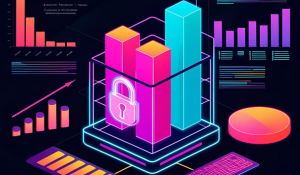Relying solely on source code or binary analysis can leave security gaps that attackers can exploit. A dual-layered approach—combining both methods—ensures comprehensive coverage from early development stages to final production deployment.
By embedding this strategy into DevSecOps workflows, organizations can identify vulnerabilities sooner, reduce risk, and maintain compliance with evolving cybersecurity regulations.
How to Successfully Implement Binary and Source Code Analysis in Tandem
To successfully implement a dual-layered approach within DevSecOps workflows:
- Shift Left with Source Code Analysis: Incorporate source code analysis early in development, ideally integrated with IDE tools for immediate developer feedback.
- Automate Both Analysis Types in CI/CD: Configure automated scans at different pipeline stages:
- Source analysis during code commits and pull requests
- Binary analysis during build and pre-deployment phases
- Establish Security Gates: Define clear security criteria that must be met before code can progress through the pipeline.
- Centralize Results Management: Consolidate findings from both analysis types in a single dashboard for comprehensive risk visibility.
- Use Binary Analysis as Final Verification: Implement binary analysis as the final security check before deployment to production.
Common Challenges and How to Overcome Them
Challenge 1: Developer Resistance to Adding Security Steps
Solution: Focus on frictionless integration and highlight how early vulnerability detection actually saves time compared to post-deployment remediation.
Challenge 2: High Volume of Findings
Solution: Implement risk-based prioritization to focus on the most critical issues first and use contextual analysis to reduce false positives.
Challenge 3: Expertise Requirements
Solution: Leverage platforms like Finite State that automate complex analysis and provide clear, actionable guidance rather than just raw findings.
The ROI and Business Benefits of a Dual-Layered Analysis Approach
Investing in both source code and binary analysis provides measurable security and business benefits, including:
Security Benefits
- Reduced Vulnerability Window: Adopting both analysis types results in faster identification and remediation of security issues
- Decreased Attack Surface: You can’t defend what you can’t see, so a more comprehensive coverage of potential vulnerabilities is always a plus
- Lower Incident Likelihood: Taking a proactive rather than reactive approach to your product security prevents security incidents before they occur
Compliance Advantages
- SBOM Requirements: Software Bill of Materials have quickly become mandatory in many industries, and adopting a dual-layered security approach helps organizations meet these requirements for software transparency
- Regulatory Frameworks: Expanding scanning capabilities supports compliance with NIST, FDA, and industry-specific standards that require secure-by-design practices and efficient vulnerability management
- Documentation: The combined results of source code and binary analysis provide comprehensive evidence of security due diligence
Competitive Advantages
- Faster Release Cycles: Extending visibility across the entire build cycle improves product release times as fewer issues need to be addressed late in development, which can lead to duplication of work
- Improved Customer Trust: With data privacy quickly becoming today’s hot topic, demonstrable security practices help build confidence with customers and may give you a competitive edge, particularly in crowded markets
- Reduced Breach Costs: Comprehensive security reduces the likelihood and impact of incidents and their associated costs, both reputational and financial
Conclusion
A mature dual-layered security program requires thoughtful implementation, continuous refinement, and organizational buy-in. However, the investment pays dividends through reduced security incidents, streamlined development processes, and enhanced competitive positioning in markets where security is a key differentiator.
As software supply chain attacks continue to make headlines, organizations that adopt comprehensive scanning approaches will be better positioned to navigate the evolving threat landscape and confidently deliver innovative solutions.
Subscribe to Our Blog
Get the latest posts delivered straight to your inbox weekly.
Share this
You May Also Like
These Related Stories

Source Code vs. Binary Analysis: How Dual-Layer Security Protects Software Supply Chains

CI/CD, DevSecOps, and the Road to Security Maturity


